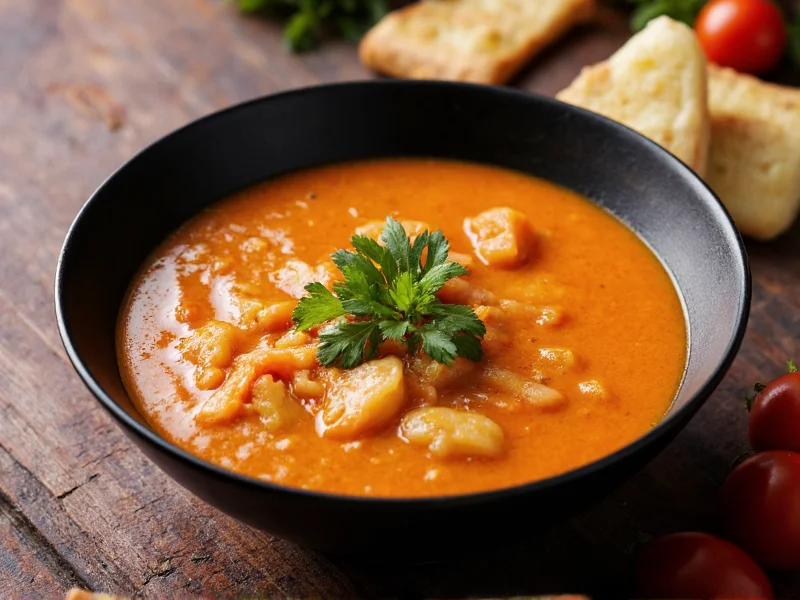Many home cooks searching for “golumpki soup” are likely confused by regional variations or mistranslations. Authentic Polish golumpki (meaning “little pigeons” in Polish) represent a cherished comfort food with deep cultural roots in Central and Eastern Europe. This guide clarifies the dish’s true preparation while addressing why the “soup” confusion persists.
What Are Golumpki, Really?
Golumpki are savory rolls made from blanched cabbage leaves wrapped around a filling typically composed of ground meat (usually pork or beef), rice, onions, and spices. The rolls are arranged in a pot, covered with tomato sauce or broth, and slow-cooked until tender. Despite frequent online references to “golumpki soup,” no traditional Polish recipe prepares this dish as a soup.
The confusion likely stems from:
- Misinterpretation of “ broth-based cooking ” as “ soup ”
- Regional adaptations where cabbage appears in soups (like kapuś sólły, Polish sour cabbage soup)
- Non-Polish cooks experimenting with cabbage roll ingredients in soup formats
Traditional Golumpki vs. Soup Variations
| Characteristic | Traditional Golumpki | "Golumpki Soup" Variations |
|---|---|---|
| Preparation | Cabbage rolls stuffed and baked/simmered | Ingredients chopped into broth |
| Texture | Firm rolls with intact cabbage layers | Shredded cabbage in liquid base |
| Cultural Authenticity | Centuries-old Polish tradition | Modern reinterpretation |
| Common Serving Style | Whole rolls with sauce | Bowl of broth with ingredients |
Why the “Soup” Misconception Persists
Several factors contribute to the “golumpki soup” confusion:
- Broth-based cooking: Traditional golumpki simmer in tomato broth, leading some to misclassify it as soup
- Regional dialects: In some Polish communities, zupa (soup) might colloquially describe any liquid-based dish
- Recipe adaptations: Modern cooks create soup versions by chopping stuffed cabbage ingredients
- Online misinformation: Recipe sites sometimes mislabel dishes for SEO purposes
Authentic Golumpki Recipe
For those seeking genuine Polish stuffed cabbage rolls, this traditional preparation delivers authentic flavor:
Ingredients
- 1 large head green cabbage
- 1 lb ground pork or beef (or mix)
- 1 cup cooked rice
- 1 onion, finely chopped
- 2 cloves garlic, minced
- 1 (28-oz) can crushed tomatoes
- 2 tbsp tomato paste
- Salt, pepper, allspice to taste
Step-by-Step Preparation
- Core cabbage and blanch in boiling water for 5 minutes to soften leaves
- Mix meat, rice, onions, garlic, salt, pepper, and 1 tsp allspice
- Place 2-3 tbsp filling on each cabbage leaf, fold sides inward, and roll tightly
- Arrange rolls seam-side down in Dutch oven
- Combine crushed tomatoes, tomato paste, and 1 cup water; pour over rolls
- Cover and simmer on low heat for 1.5-2 hours
- Serve with sour cream and fresh dill
Vegetarian Golumpki Variation
For plant-based eaters, authentic vegetarian golumpki recipe substitutes work beautifully:
- Replace meat with cooked lentils or mushrooms
- Add chopped walnuts for texture
- Use vegetable broth instead of meat-based liquids
- Include caraway seeds for traditional flavor
This version maintains the dish’s essence while accommodating dietary preferences—perfect for holiday meals or Polish comfort food recipes year-round.
Serving and Storage Tips
Maximize your golumpki experience with these professional tips:
- Serving: Pair with rye bread and beet salad for authentic Polish meal
- Make-ahead: Golumpki taste better the next day as flavors meld
- Freezing: Freeze uncooked rolls for up to 3 months (thaw before cooking)
- Reheating: Simmer in tomato sauce to maintain moisture
Cultural Significance of Golumpki
Understanding history of golumpki enriches the cooking experience. These stuffed cabbage rolls originated in peasant kitchens where cooks used seasonal ingredients. Cabbage’s abundance in Eastern European autumns made it ideal for preservation through fermentation (sauerkraut) or stuffing. The dish spread globally through Polish immigration, becoming a staple at family gatherings and holidays like Christmas Eve.
Common Mistakes to Avoid
Even experienced cooks make these golumpki preparation errors:
- Using raw rice (must be pre-cooked to absorb liquid properly)
- Overfilling leaves (causes bursting during cooking)
- Skipping the blanching step (makes leaves tear easily)
- Boiling instead of simmering (breaks down delicate rolls)
- Using only tomato sauce (traditional versions often include broth)











 浙公网安备
33010002000092号
浙公网安备
33010002000092号 浙B2-20120091-4
浙B2-20120091-4